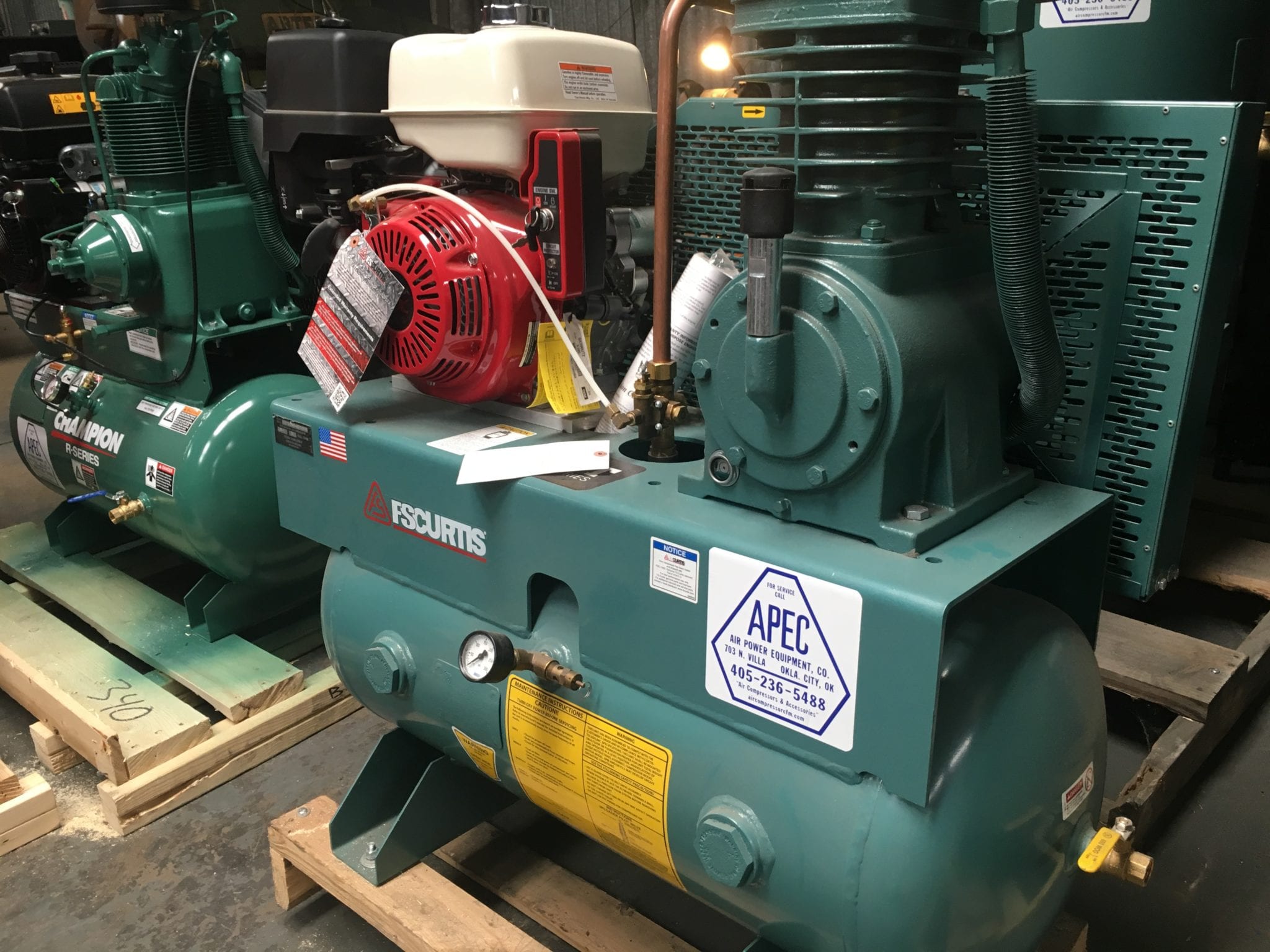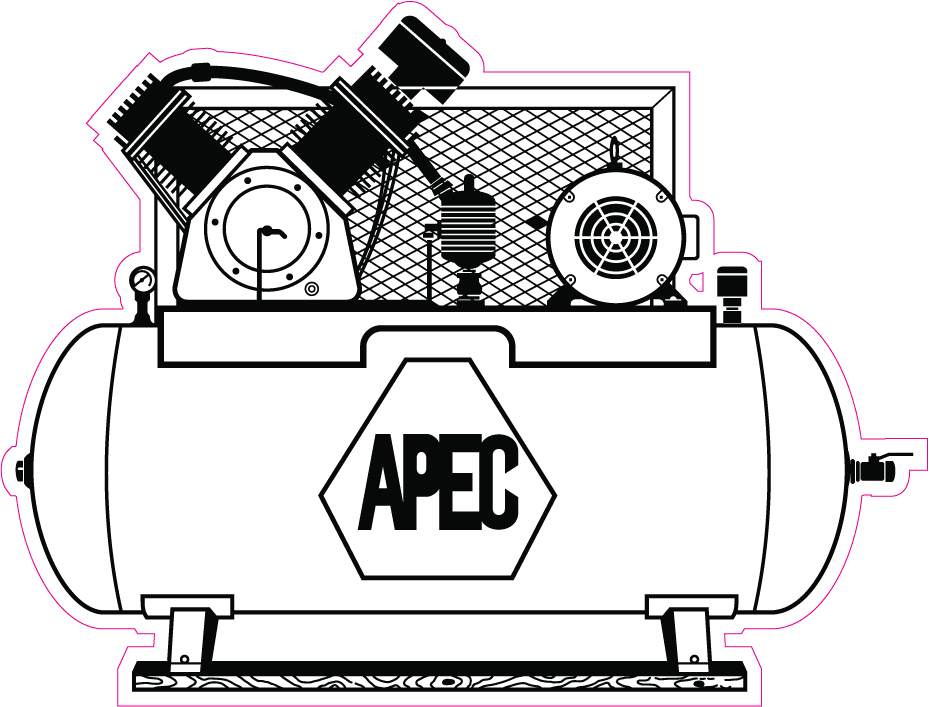Air Compressor Sizing
Without a properly sized air compressor, a compressed-air system performs its duties with higher energy costs per unit of compressed air, and often improper or erratic tool operation. Shortened component life, reduced capacity to run tools and the build-up of rust or sludge in the lines are also symptoms of improperly sized air compressors. Problems like these have the potential to cause downtime and equipment loss which cost businesses thousands of dollars a year.
In order to create an efficient compressed-air system, you’ll need to take into account the total workload, air compressor sizing and the intended method of air distribution.
Pneumatic air tools require a volume of compressed air (expressed as cubic feet per minute, or CFM) at a specific pressure (expressed as pound-force per square inch gauge, or psig). Air compressor sizing can be better determined by CFM and psig ratings than by horsepower. When you are selecting and sizing air compressors, choose a horsepower that will efficiently produce the desired CFM, while maintaining your work load’s air volume requirement.
-
- Determine your air requirements. Gather all of your pneumatic tools together. Write down the required CFM to operate each tool, as specified by the manufacturer.
- Calculate the total. Add together the CFM requirements of all of the pneumatic tools you plan to run at the same time. Increase this number by 25% to allow for additional tools, future growth, and eventual air system leaks.
- Determine the maximum pressure (psig) needed to run the air tools. You do not need to add the psig values together like you did the CFM requirements; simply use the value of the tool that requires the greatest amount of pressure.
- Check for voltage and phase. Be sure the motor characteristics of the compressor are compatible with your location: Is your electrical supply single-phase or three-phase? What is the voltage? Residential and commercial buildings usually have single-phase, 115 volts, 60-cycle power, while industrial buildings often have a three-phase power supply.
- Determine the compressor tank (receiver) size. Compressors should be used with an air receiver or storage tank. The receiver stores compressed air and minimizes the loaded run time of the compressor. The air receiver should be at least 5 gallons per CFM for optimal results.
- Select your air compressor. Bring your CFM, maximum pressure, motor characteristics, and receiver size requirements to Air Power Equipment and compare features among brands. Keep the quality factor in mind; you will certainly get what you pay for with air compressors.

Air Power Equipment Company in Oklahoma City (OKC) is the leading source for new air compressor sales and used air compressor sales throughout the country. We specialize in rotary screw air compressor sales and reciprocal air compressor sales. Air Power Equipment Company is also the best source for air compressor service and air compressor parts in Oklahoma.
Air Power Equipment Company in Oklahoma City (OKC), is the leading source for new air compressor sales and used air compressor sales throughout the country. We specialize in rotary screw air compressor sales and reciprocal air compressor sales. Air Power Equipment Company is also the best source for air compressor service and air compressor parts in Oklahoma.



